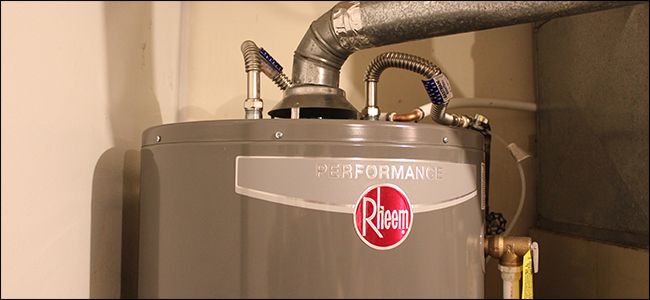Key Care Techniques for Your Home's Hot Water System
Key Care Techniques for Your Home's Hot Water System
Blog Article
They are making a few great pointers about Tips For Maintaining Your Hot Water Heater as a whole in the article down the page.

Warm water is crucial for everyday comfort, whether it's for a refreshing shower or washing recipes. To guarantee your hot water system runs successfully and lasts much longer, regular upkeep is essential. This short article offers useful tips and understandings on exactly how to maintain your home's warm water system to prevent disruptions and costly repair work.
Intro
Preserving your home's hot water system may appear complicated, but with a couple of easy steps, you can guarantee it operates smoothly for many years to come. This guide covers everything from comprehending your hot water system to do it yourself maintenance ideas and recognizing when to employ professional aid.
Importance of Keeping Your Warm Water System
Normal maintenance not just extends the life-span of your warm water system but likewise ensures it operates effectively. Overlooking upkeep can result in lowered efficiency, higher power expenses, and also early failure of the system.
Signs Your Warm Water System Needs Maintenance
Knowing when your warm water system requires interest can protect against major issues. Watch out for indicators such as irregular water temperature, weird sounds from the heater, or rustic water.
Comprehending Your Warm Water System
Prior to diving right into upkeep jobs, it's handy to recognize the basic components of your hot water system. Normally, this includes the water heater itself, pipelines, anode poles, and temperature level controls.
Month-to-month Upkeep Tasks
Normal monthly checks can help catch small concerns before they rise.
Purging the Hot Water Heater
Flushing your water heater gets rid of debris accumulation, enhancing efficiency and lengthening its life.
Monitoring and Replacing Anode Rods
Anode rods avoid rust inside the storage tank. Examining and replacing them when worn is vital.
Evaluating and Adjusting Temperature Level Setups
Readjusting the temperature settings makes certain optimal performance and safety.
DIY Tips for Maintenance
You can do numerous upkeep tasks on your own to maintain your warm water system in top condition.
Checking for Leaks
Consistently examine pipes and connections for leakages, as these can bring about water damages and greater expenses.
Evaluating Pressure Relief Valves
Testing the stress relief valve guarantees it functions correctly and avoids excessive pressure build-up.
Shielding Pipelines
Protecting hot water pipelines decreases warm loss and can save power.
When to Call a Professional
While do it yourself upkeep is valuable, some concerns need expert know-how.
Complex Concerns Needing Expert Help
Examples include significant leaks, electrical troubles, or if your water heater is regularly underperforming.
Routine Specialist Upkeep Perks
Specialist upkeep can include comprehensive examinations, tune-ups, and making sure compliance with safety and security requirements.
Verdict
Routine upkeep of your home's hot water system is vital for performance, longevity, and cost financial savings. By following these pointers and understanding when to seek specialist assistance, you can make sure a trustworthy supply of warm water without unforeseen interruptions.
How to Maintain an Instant Hot Water Heater
Before tinkering with your hot water heater, make sure that it’s not powered on. You also have to turn off the main circuit breaker and shut off the main gas line to prevent accidents. Also turn off the water valves connected to your unit to prevent water from flowing into and out of the appliance. 2. When you’re done, you have to detach the purge valves’ caps. These look like the letter “T†and are situated on either side of the water valves. Doing so will release any pressure that has accumulated inside the valves while at the same time avoid hot water from shooting out and burning your skin. 3. When the purge valves’ caps are removed, you have to connect your hosing lines to the valves. Your unit should have come with three hoses but if it didn’t, you can purchase these things from any hardware or home repair shops. You can also get them from retail stores that sell water heating systems. Read the user’s manual and follow it to complete this task properly. When the hosing lines are connected, open the purge port’s valves. 4. You should never use harsh chemical cleaners or solutions when cleaning your unit. Make use of white vinegar instead. It should be undiluted and you’ll probably use about 2 gallons. 5. Now flush your water heater. This task should probably take about 40 minutes. We can’t give you specific directions for this because the procedure is carried out depending on the type, model and brand of your heater. With that being said, refer to the user’s manual. 6. When you’re done draining the unit, you have to turn off the purge port valves again. Remove the hosing lines that you earlier installed on each of the water valves. Put the valve caps (purge port) back in their respective places and be very careful so as not to damage the rubber discs that are found inside these caps. 7. Now that everything’s back in place, check your user’s manual again to find out how to reactivate your water heating system. 8. Once it is working, turn one of your hot water faucets on just to let air pass through the heater’s water supply pipes. Leave the tap on until water flows smoothly out of it. https://www.orrplumbing.com/blog/2014/september/how-to-maintain-an-instant-hot-water-heater/

Do you like reading about What Kind of Maintenance Do Water Heaters Need?? Post feedback further down. We would be glad to listen to your suggestions about this review. In hopes to see you back again soon. Loved our content? Please quickly share it. Let another person find it. Thanks so much for your time spent reading it.
Explore Now Report this page